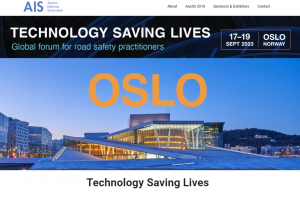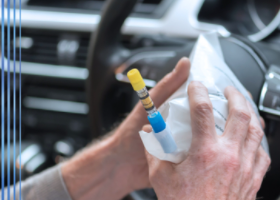ETSC has isuued ratest Safety Performance Index in EU countries and announced that Finland wins Prize with this index.
EU road death reduction in decades was only 16% average, but look to Finland , they achieved 29% decreasing. This is significantly best performance in EU countries. This performance made Finland win the Prize.
What is different?
By hearing interview dialogue, do we find specific strategies or special practices for reduction death on the road?
I think Finland’s road safety strategy seems consist of generally normaly usual and not special action.
For exmple, interview asked about “speed” which is one of major factor, she answered….
Speed is a major factor in overall road safety performance. Speed limits are reduced to 80km/h on a large part of Finland’s rural road network during the winter months, with noticeable results in terms of deaths prevented. The rest of the year, the speed limit increases to 100km/h. Finland is only one of few countries to have this limit on rural roads. What is Finland doing to reduce speeding on its roads, in particular on rural roads? Speeding is a serious problem and reducing it is a very important goal. We can influence it in various ways, such as through education and surveillance. In Finland, the police also carry out surveillance on lowtraffic road sections to maximise the preventative effect of surveillance. Automated traffic monitoring is also used in some parts of the road network; the aim is to increase this in the coming years. The number of police officers will also be increased during this government’s term. It is important to ensure that road properties and speed limits are compatible. In addition to setting the correct speed limits, we must ensure that drivers follow them. We aim to influence this through many of the measures of the Traffic Safety Strategy.
DUI action
Finland had been keeping Alcohol interlock laws . She said some Key factors for good practice.
^How is Finland tackling the problem of drinkdriving? What role does enforcement play?
Finland has been carrying out long-term campaigns to reduce drink- and drug-driving. Since the 1970s, campaigns and police breathalyser checks have affected people’s attitudes, and driving under the influence of alcohol is currently perceived very negatively in Finland. However, alcohol and other intoxicants continue to be one of the biggest problems in traffic. The Traffic Safety Strategy introduced measures such as promoting the use of alcohol interlocks and determining the blood alcohol limit for micromobility. Moreover, under the strategy, we are making efforts to intervene in substance abuse as early as possible. The important message is that intoxicants and traffic do not belong together under any circumstances. As we say in Finland: If you drink, you don’t drive. Good behaviour and fitness are required in traffic.
-Can you give us an update on your alcohol interlock rehabilitation programme?
How does it work and what are the latest results? 49 people died and 400 people were injured on average in incidents involving drink-driving in the past three years. Almost a quarter of all deaths and injuries in road traffic collisions result from driving under the influence of alcohol. As driving under the influence is a significant risk factor and those caught while intoxicated are often reoffenders, alcohol interlocks have much greater potential for improving traffic safety compared to the current situation. The relatively low alcohol interlock use rates are currently identified as a problem. This is affected by factors such as the costs of using the alcohol interlock and the fact that driving disqualifications are currently relatively short. In Finland, a working group on driving bans is currently examining whether driving bans should be extended in cases of drink-driving and what impacts that would have on road safety and the use of alcohol interlocks. As a minister, I want to tighten the legislation. Driving licences should be suspended for a longer time, with a lower threshold, etc. The alcohol interlock rehabilitation programme, or rather the use of alcohol interlocks in cases involving drink-driving, is based on the Alcohol Interlock Device Act, which was adopted in 2016. In Finland, the “alcohol interlock programme” is used in cases involving a driving ban on a person caught driving under the influence of alcohol, in which a person subject to the driving ban requests that the driving ban be replaced with an alcohol interlock-controlled right to drive. The duration of the alcohol interlockcontrolled right to drive is always at least one year and is at least as long as the person’s driving ban. According to Traficom statistics, at the beginning of 2022, 1,099 Finns had been granted alcohol interlockcontrolled right to drive as a result of driving while intoxicated. While there has been little increase in alcohol interlock use related to drink-driving, the use of alcohol interlocks on a health-related basis has increased. In addition, mandatory alcohol interlocks have been used in specific sectors, such as school transport, since 2011. According to surveys conducted in Finland, more than 80% of respondents want more severe penalties for driving under the influence of alcohol. In fact, the better use of alcohol interlocks in improving traffic safety would require means such as extending driving bans (e.g. to at least one year to match the level in Sweden and Denmark) to make selecting alcohol interlock-controlled right to drive a more attractive alternative to driving bans. Research shows that alcohol interlocks prevent reoffending among drink-drivers and may also have a more general effect on the driver’s attitudes and alcohol use.
Trend of Strategy
We know most countries over the world have kind of ” Road Safety Strategy” like “Vison Zero”.
And most of them had same target ” 50%” reduction. However each countries progress and result show that reduction target , for some countries seem to difficult…

And we in Japan who will conduct ” Road Safety Strategy in Japan” ?
How Next Japanese “kind of Zero Vision” would be going on??

White paper is reporting progress of 2021-2025
Look forward to Next 12th Basic Plan(2026-2030)








